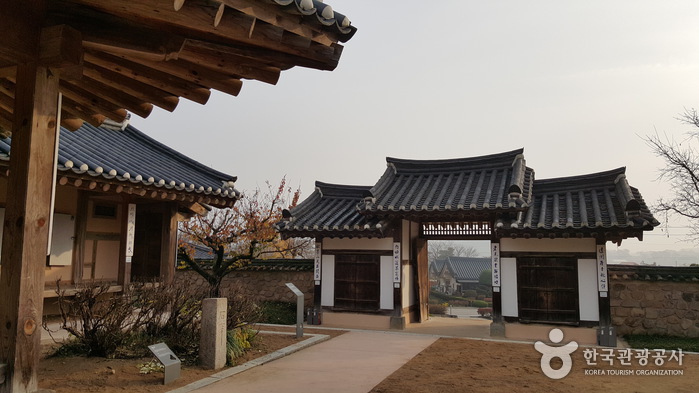Welcome to the House of Chusa
Welcome to the historic House of Chusa, a traditional Korean house that holds the legacy of the renowned scholar and calligrapher, Chusa. This old house, known as Chusa Gotaek in Korean, was constructed by Chusa’s great-grandfather, Kim Han-Sin. As you explore this enchanting destination, you will immerse yourself in the rich history and culture of South Korea.
Step into Korean Traditional Architecture
The House of Chusa features a beautiful Korean-style house compound that spans over 266.11 m². As you wander through the premises, you will come across various sections such as munganchae (a guesthouse), soseuldaemun (a high gate), sarangchae (men’s quarters), anchae (women’s quarters), and a shrine where the remains of Chusa are enshrined. The sarangchae, designed in a ㄱ-shape, stretches for one kan to the south and two kans to the east, with two rooms and a daecheongmaru (living area). The anchae consists of a six-kan daecheongmaru and two one-kan rooms, each showcasing the intricate details of traditional Korean architecture.
Discover the Stories of the Past
As you explore the grounds, you will stumble upon a tomb where Chusa’s great-grandfather, Kim Han-Sin, and his wife, Hwasun Princess, are buried. The nearby gate was constructed as a tribute to Princess Hwasun’s faithfulness to her husband, serving as a reminder of their love and devotion. These historical landmarks provide a glimpse into the lives of the past, allowing you to connect with the rich tapestry of Korean history.
Witness a Natural Monument
Approximately 600 meters north of the old house, you will encounter a lacebark pine tree, designated as a Natural Monument. Originating from northern China, this rare species is one of the few of its kind found in Korea. Legend has it that Chusa smuggled the pine tree across the border when he was just 25 years old, planting it at his great-grandfather’s tomb. Despite its hardships, the tree has been carefully protected, and in 1980, the damaged branch was treated. Witnessing this magnificent tree is a truly unique experience that showcases the enduring spirit of nature.
Whether you are a history enthusiast, architecture lover, or simply seeking a tranquil escape, the House of Chusa offers a journey into the heart of South Korea’s heritage. Come and explore this captivating destination, where the past comes alive amidst the beauty of tradition.

